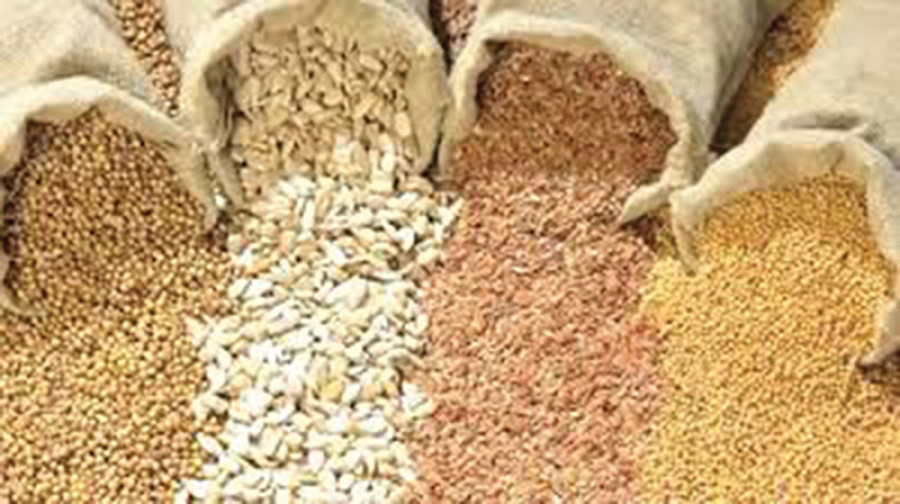Opinion
The second green revolution
Genetically modified crops can be a boon to human civilisation and can feed the rapidly increasing population
Manoj Paudel
It was some months ago, while surfing Internet my eyes were caught by Kevin Carter’s Pullitzer prize winning photography. The picture depicted a vulture, which was waiting for a lean and thin malnourished baby to prey on as soon as the baby died of hunger. This picture was taken during the 1993 famine in Sudan. With the rapid increase in world population and increasing exploitation of the available resources on the earth, feeding the increasing population has become a real challenge to agriculturists, agricultural scientists, environmentalists and several other stake holders. According to recent report of Food and Agricultural Organisation (FAO), around 815 million people worldwide are suffering from hunger. The world population is projected to reach around 10 billion by 2050. And according to FAO, food production must be increased by 50 percent globally, to feed another 2 billion people by 2050. It’s about time we practiced agriculture in a more scientific and modern way to ensure the global food security to make sure no one dies of hunger.
There has been a great revolution in molecular biology sector. Several achievements have been made in the biotechnological field and have been implemented in agricultural sector as well. By the manipulation of gene contained in DNA, different transgenic crops have been developed for human benefit. DNA, acronym for Deoxyribonucleic Acid carries genetic information regarding growth, development, functioning and reproduction of all known living organisms. It stores all the biological information. By modifying such DNAs using genetic engineering methods, different Genetically Modified (GM) crops have been developed. Genetically Modified Organisms are developed through a process. It involves placing of a copy of a desired gene or section of genetic material from one organism into another.
By such technologies desired traits can be introduced into a plant which doesn’t occur naturally in the species. DNA modification in crops results into resistance to certain pests, diseases or environmental conditions. It also reduces spoilage or resistance to chemical treatments and improves the nutrient quality of crops. All these technologies directly and indirectly contribute in obtaining higher yield from limited resources, global food security and reducing hunger.
DNA is the source and store house of all the biological information. We need to get acquainted with DNA for developing crops having desired traits. At present, most of the world’s cultivated land has been occupied by GM crops. Several reports state that more than half of the total land used to grow crops in United States is planted with genetically engineered crops. Almost 90 percent of soybeans planted in United States are genetically modified.
Insects, pests, and diseases are serious problems of agriculture that cause heavy loss in crop production every year. It is the major challenge for food security. By means of genetic engineering, insect and pest resistant crops can be developed by transferring genes that code for the toxins produced by bacterium. Likewise, resistance to viruses can be achieved by transferring certain viral genes to plants that interfere with the normal replication of the viruses thereby inhibiting the spreading of infection. Papaya resistant to ringspot virus , bananas resistant to wilt diseases are some examples of GM crops.
Talking about the world’s burning issue, climate change is possessing a serious threat to agriculture and food availability. Rising temperature, drought, irratic rainfall, are causing heavy loss in crop production and food deficit every year. In such cases, development of heat and drought tolerant crops by modifying double helix can be a boon to human civilisation. Introduction of nitrogen fixing gene (Nif gene) in non-leguminous crops has been made possible through DNA technology. Manipulating DNA , high value and nutritive crops can be produced with increased shelf life and flavor.
GM crops are the greatest discoveries in biotechnological field. Such crops are stress tolerant and yield-high. They require less care and labor, and have high nutritive value. A meta-analysis concluded that GM technology adoption has reduced chemical pesticide use by 37 percent, increased crop yields by 22 percent and increased farmer profits by 68 percent. All the parameters of food security, food availability, food affordability and food accessibility are possible in the present world only through the GM crops. GM crops are the best and only alternative to feed the growing population and maintain global food security.
Paudel is pursuing BSc Agriculture in Agriculture and Forestry University, Rampur Chitwan




 11.12°C Kathmandu
11.12°C Kathmandu










